Crossbreeding is the exchange of gametes transmitted by two individuals during sexual reproduction.
Crossbreeding occurs naturally during sexual reproduction. It is also used to reproduce individuals (often animals or plants) that have desired hereditary traits. Knowing the gametes produced by both parents, it is possible to choose the right candidates to increase the chances of having offspring that meets the desired criteria.
Gregor Mendel, considered the father of genetics, studied hybridization in plants. By working with different species of pea plants, he laid the foundations of heredity. Two main laws emerged from his work.
Alleles are the different forms a gene can take.
The law of segregation of alleles states that the two alleles of a gene separate during meiosis so 50% of the obtained gametes contain one allele and 50% of the gametes contain the other.
Diploid cells (regular cells) have two alleles for each gene. The alleles are located on pairs of homologous chromosomes.
Haploid cells (gametes) resulting from meiosis have a single allele for each gene. The allele is located on one of the chromosomes of a pair of the parent individual.
In a homozygous individual (dominant or recessive), the gametes obtained by meiosis all have the same allele.
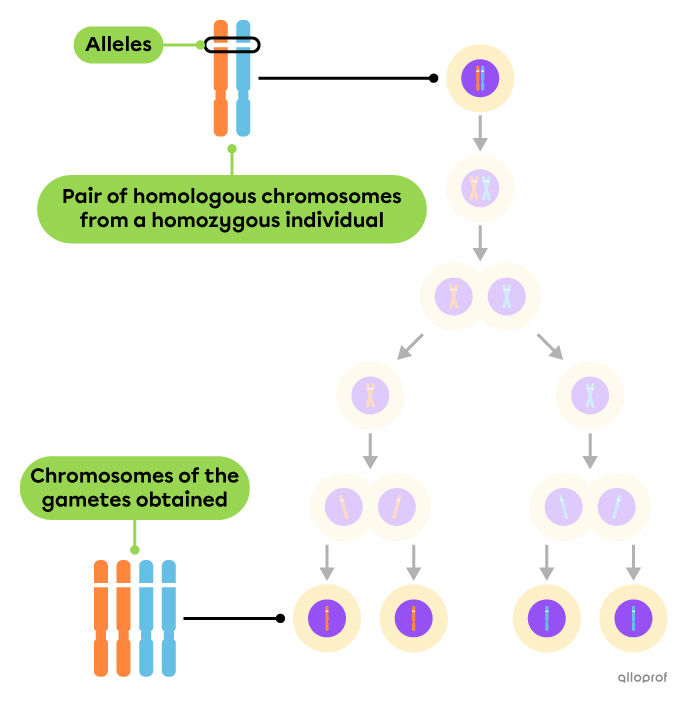
In heterozygous individuals, half of the obtained gametes have one of the two alleles and the other half have the second allele.

In the example, the dominant allele is the one that gives the purple colour to the flowers of a pea plant. This allele is represented by the capital letter P. Therefore, the recessive allele is the one that gives the white colour to the flowers, and it is represented by the lowercase letter p.
During crossbreeding, one of the plants has two alleles coding for the white colour (homozygous recessive or pp) and the second actually has two alleles coding for the purple colour (homozygous dominant or PP). The two plants are crossbred, in other words, a gamete from one flower fertilizes a gamete from the other flower. The gametes of the first plant all have the white colour allele (p) and the ones of the second plant all have the purple colour allele (P).
The result of the crossbreeding is called 1st generation. The plants of this generation are all heterozygous genotype (Pp). The phenotype of these plants is the purple colour of the petals.
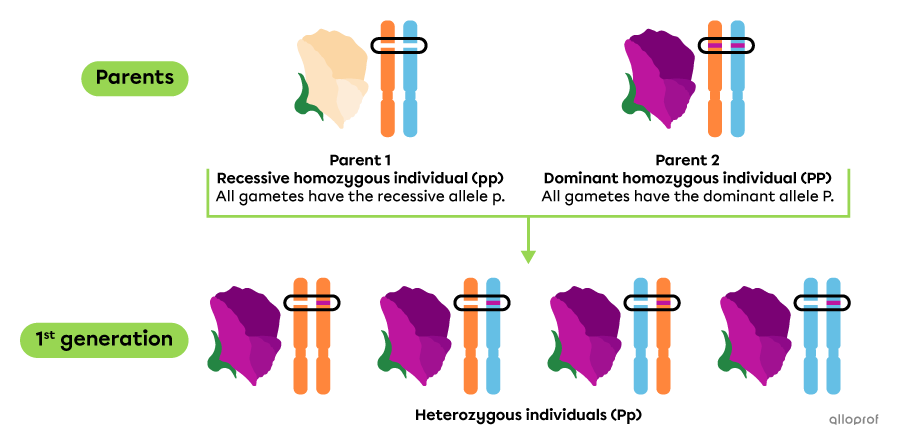
The situation can be a little more complex such as when there is crossbreeding between two heterozygous plants. In this case, a checkerboard-like table, also called a Punnett Square, can be used. This type of table makes it possible to clearly visualize all the possibilities of crossbreeding, as well as the probabilities of obtaining each of the genotypes and phenotypes.
Here is the structure of a Punnett Square.
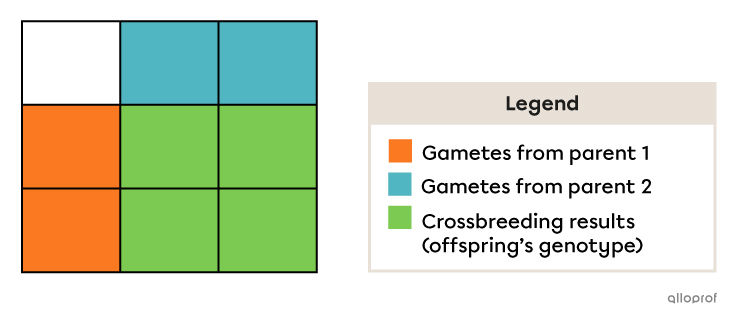
To use the Punnett Square, the gametes of one parent are placed in the boxes in the first line and those of the other parent in the boxes in the first column. The gametes are then assembled in the central boxes to obtain the possible genotypes of the offspring.
The more crossbreeding possibilities, the more squares on the checkerboard.
In this case, we crossbreed two 1st generation pea plants obtained during the crossbreeding of the previous example. The plants are heterozygous.
Each of the plants offers two types of gametes: white and purple. Using a Punnett Square, we can see four crossbreeding possibilities.
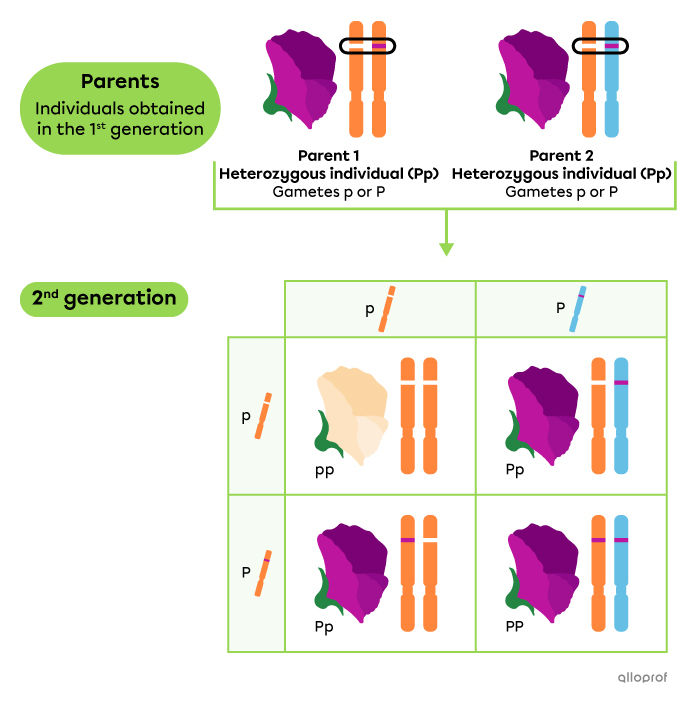
There are three possible genotypes for the 2nd generation of plants: PP, Pp (present twice) and pp. The probabilities of each of the genotypes are 25% for PP, 50% for Pp, and 25% for pp.
There are two possible phenotypes: plant with white flowers or plant with purple flowers. The probabilities of each of the phenotypes are 75% for plants with purple flowers and 25% for plants with white flowers.
The law of independent assortment explains that the independent distribution of different alleles determines the phenotype of an individual. All possible combinations must be considered.
This law applies to situations where more than one hereditary trait is studied. The crossbreeding studied by Mendel concerns yellow (Y) or green (y) peas and smooth (S) or wrinkled (s) peas. He crossed two homozygous plants (YYSS and yyss) over two generations. The results he obtained helped him understand that the alleles associated with two hereditary traits are not necessarily transmitted from parents to offspring at once. They can combine with each other completely independently, resulting in multiple genotypes with different phenotypes.
The following table presents the genotype and the phenotype of the 2nd offspring generation of crossbreeding studied by Mendel.
|
Genotypes |
Phenotype |
|---|---|
|
YYSS |
 |
|
YYss |
 |
|
yySS |
 |
|
yyss |
 |
In the following example, two hereditary traits are studied in cats:
-
fur length where the short allele (S) is dominant and the long allele (s) is recessive;
-
polydactyly (more than four fingers per paw) where the polydactyl (P) allele is dominant and the normal (p) allele is recessive.
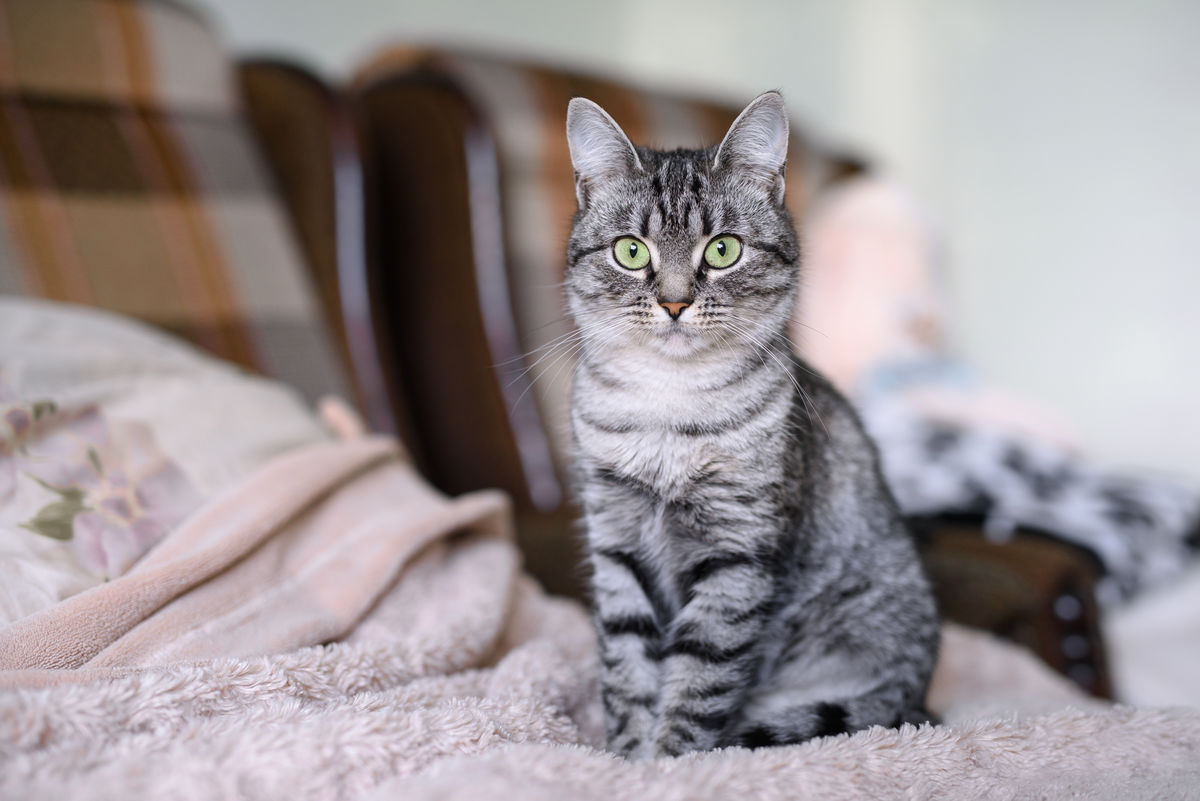
Lalandrew, Shutterstock.com
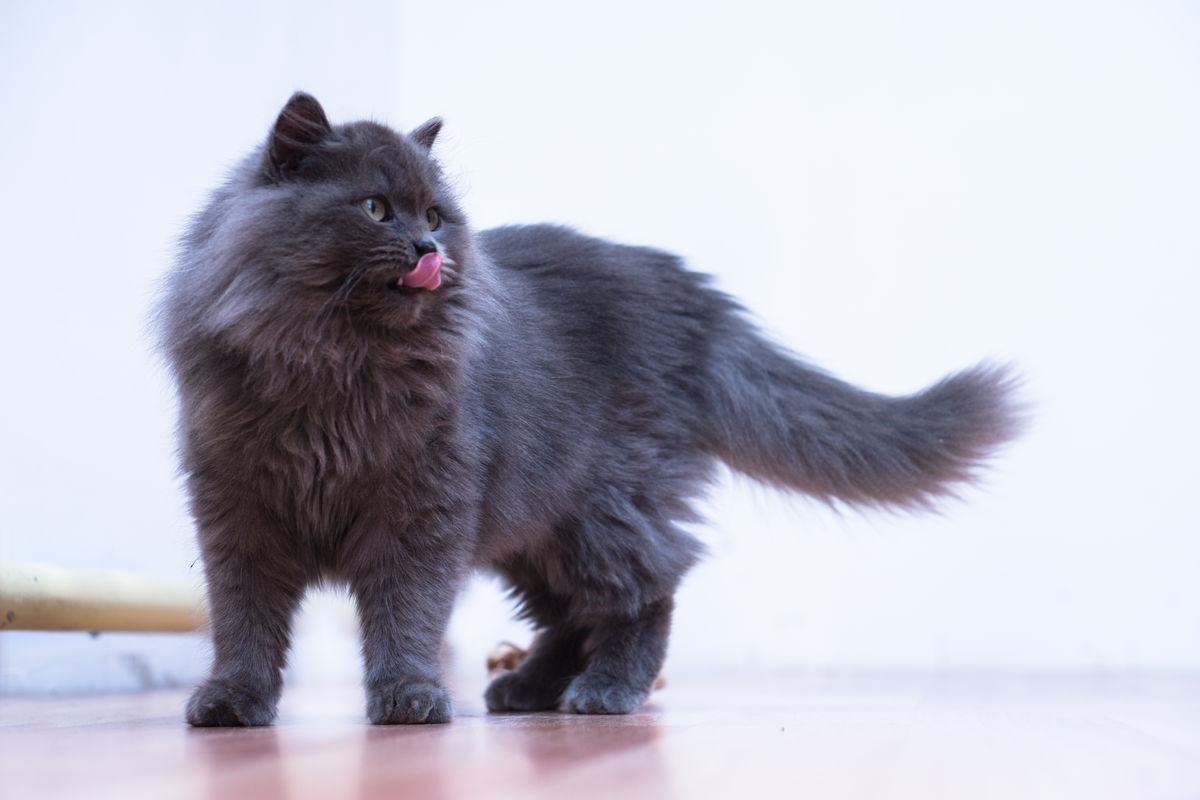
Alexandr Korolev, Shutterstock.com
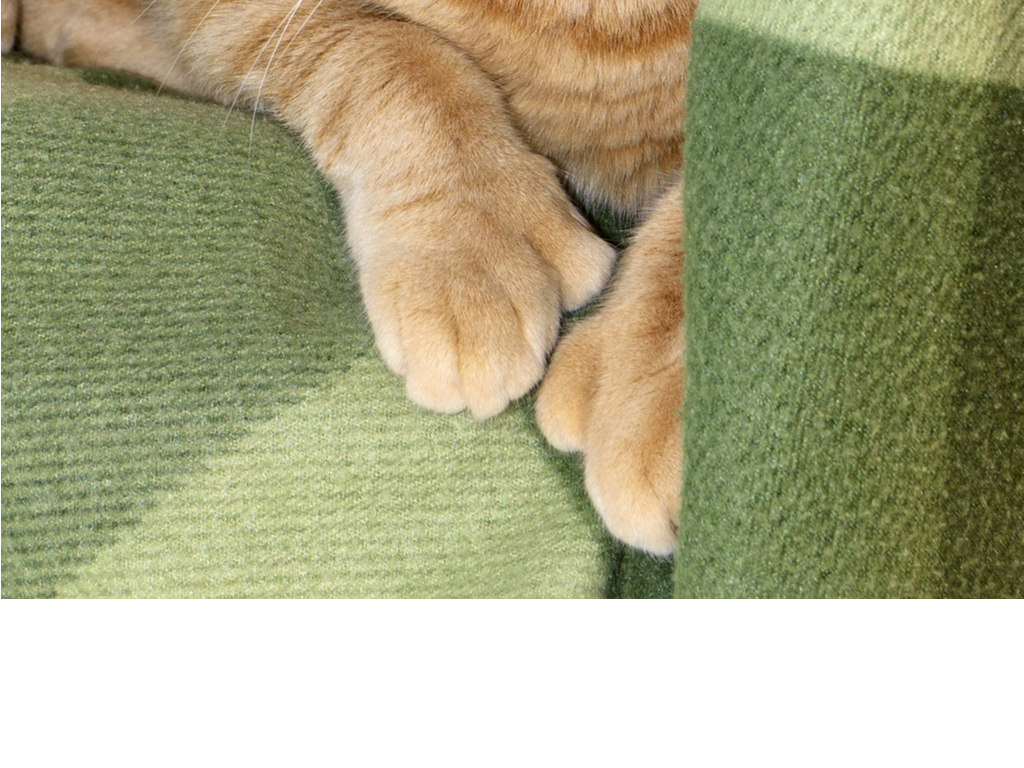
Lux Blue, Shutterstock.com
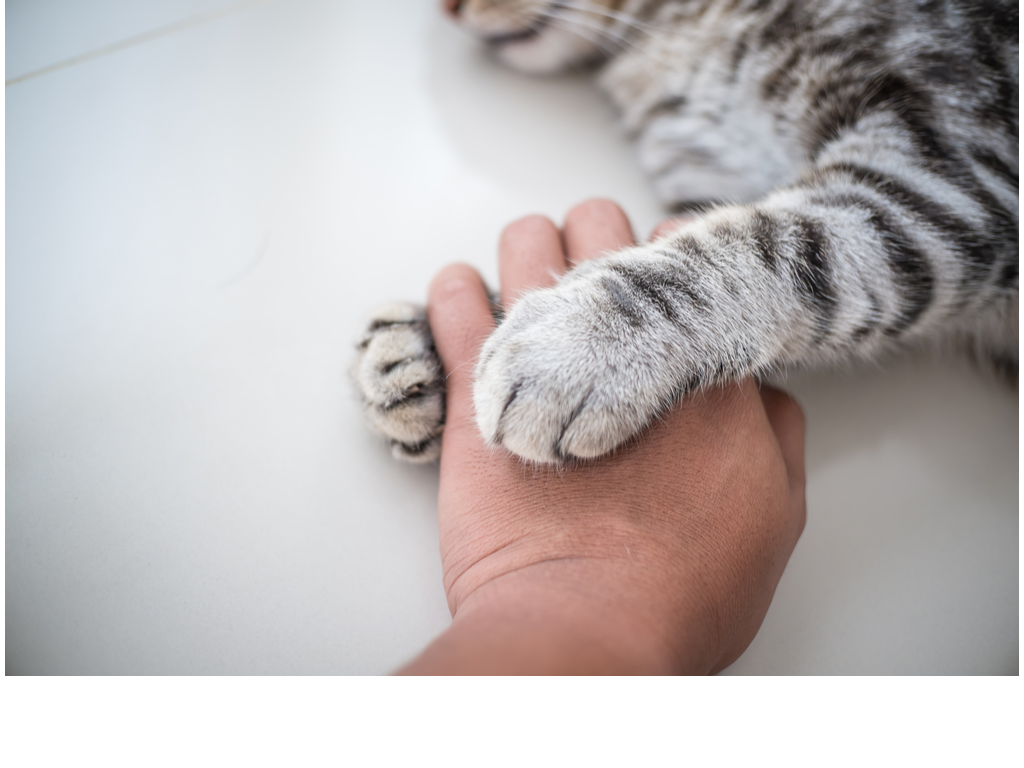
Nitiphonphat, Shutterstock.com
To obtain a first generation of kittens, a cat that is dominant homozygous for fur length (SS) and recessive homozygous for polydactyly (pp) is crossed with a cat that is recessive homozygous for fur length (ss) and dominant homozygous for polydactyly. (PP).
The following is their genotype, phenotype, and gamete.
|
|
Parent 1 |
Parent 2 |
|---|---|---|
|
Genotype |
SSpp |
ssPP |
|
Phenotype |
Short hair, normal paws |
Long hair, polydactyl paws |
|
Gamete |
Sp |
sP |
Since the parent cats of the 1st generation are homozygous for both traits under study, they only transmit one type of gamete each. Parent 1 transmits a gamete whose allele arrangement is Sp and Parent 2 transmits a gamete whose allele arrangement is sP. The gametes are placed in the Punnett Square for crossbreeding analysis.
| sP | |
|---|---|
| Sp | SsPp |
All the individuals in the 1st generation have a heterozygous genotype for the two traits under study (SsPp). Their phenotype is short hair, polydactyl paws.
To obtain a second generation of kittens, two cats of the 1st generation are crossbred. Here are their genotypes, phenotypes, and gametes.
|
|
Parent 1 |
Parent 2 |
|---|---|---|
|
Genotype |
SsPp |
SsPp |
|
Phenotype |
Short hair, polydactyl paws |
Short hair, polydactyl paws |
|
Gametes |
SP, Sp, sP, sp |
SP, Sp, sP, sp |
| SP | Sp | sP | sp | |
|---|---|---|---|---|
| SP | SSPP | SSPp | SsPP | SsPp |
| Sp | SSPp | SSpp | SsPp | Sspp |
| sP | SsPP | SsPp | ssPP | ssPp |
| sp | SsPp | Sspp | ssPp | sspp |
The probabilities of each of the phenotypes are the following.
-
Short hair and polydactyl paws: 9/16
-
Short hair and normal paws: 3/16
-
Long hair and polydactyl paws: 3/16
-
Long hair and normal paws: 1/16